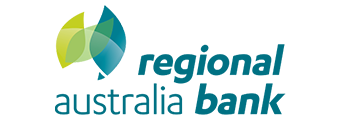It might be harder than ever to buy property in Australia right now. If you’re an aspiring homeowner and struggling to find something affordable, it might have crossed your mind to build a home instead.
But does doing so actually work out cheaper? Let’s dig into the numbers to compare the costs of building versus buying a new home.
How much does it cost to build a home?
There are two main expenses associated with building a new property – the vacant plot of land your new home will sit on and the construction itself.
How much does it cost to buy vacant land?
The Urban Development Institute on Australia (UDIA) publishes an annual report that includes the median sale price of vacant lots through the year. These are the numbers for the six largest urban centers in the nation during 2023. Note: there’s currently no data for Tasmania or the Northern Territory, nor most of regional Australia.
| Location | Median Lot Price (2023) | Median Lot Size | Stamp Duty |
|---|---|---|---|
| ACT | $679,000 | 483 sqm | $17,088 ($635 for first home buyers) |
| Greater Sydney | $641,000 | 426 sqm | $23,717 |
| Greater Melbourne | $394,000 | 353 sqm | $17,233 ($1,143 for first home buyers) |
| South East Queensland | $374,000 | 421 sqm | $12,850 ($3,595 for first home buyers) |
| Greater Perth | $245,000 | 375 sqm | $7,216 ($471 for first home buyers) |
| Greater Adelaide | $259,000 | 426 sqm | $11,986 ($2,603 for first home buyers) |
Source: UDIA State of the Land Report 2024 and Your Mortgage’s stamp duty calculator, assuming principal place of residence and a median salary for the ACT. Stamp duty figure includes other Government fees.
How much does construction cost?
Construction expenses can vary dramatically depending on the builder, the quality of materials you use, and the state you’re in, to name a few of many, many factors.
Global construction firm Rider Levett Bucknall offers a broad estimate for the cost per square metre to build a single or double-story house in each Australian city, as of Q4 2023. The Australian Bureau of Statistics (ABS) also has data on the average new build size for dwellings in Sydney, Melbourne, Brisbane, Adelaide, and Perth between 2012 and 2021, which we’ll use to estimate the overall average cost.
| City | Cost per Square Metre | Average New Build Size (2012-2021) |
|---|---|---|
| Sydney | $2,350 - $7,200 | 261 sqm |
| Melbourne | $2,200 - $5,500 | 252 sqm |
| Brisbane | $2,800 - $4,950 | 232 sqm |
| Adelaide | $1,860 - $3,800 | 210 sqm |
| Perth | $2,300 - $4,450 | 217 sqm |
| Canberra | $1,940 - $3,850 | No data |
Source: Rider Levett Bucknall Australia Report Q4, ABS.
According to the ABS, the average cost of building a home in the 22/23 financial year was $394,981. As we mentioned though, construction costs can vary dramatically, so these numbers should be taken as a very rough guide. This was the state-by-state breakdown:
| State | Average Build Cost in 22/23 |
|---|---|
| NSW | $433,000 |
| VIC | $413,000 |
| QLD | $390,000 |
| SA | $311,000 |
| WA | $336,000 |
| TAS | $375,000 |
| NT | $434,000 |
| ACT | $452,000 |
| Australia | $395,000 |
Source: ABS.
Construction home loans
Construction home loans tend to advertise higher rates than conventional loans in order to compensate lenders for the extra risk involved. The house that will be used as security for the home loan doesn't exist yet after all, so lenders price in potential complications during the building process. Construction home loan repayments are generally also interest only during the building phase, with a borrower only paying interest on the amount drawn down at a given time.
For example, you might be approved for a $200,000 construction loan and pay $50,000 as an initial deposit and the foundations. You would only repay the interest accruing on that $50,000 until you draw down more. Once the building is complete, the loan typically reverts to principal and interest repayments.
You'll likely also need to borrow funds to buy the land. Many lenders provide normal home loans to those buying land, but again there might be a slight premium on rates.
Considering building a new home? Here are some of the top construction loans available in Australia
| Lender | Home Loan | Interest Rate | Comparison Rate* | Monthly Repayment | Repayment type | Rate Type | Offset | Redraw | Ongoing Fees | Upfront Fees | Max LVR | Lump Sum Repayment | Extra Repayments | Split Loan Option | Tags | Features | Link | Compare | Promoted Product | Disclosure |
|---|---|---|---|---|---|---|---|---|---|---|---|---|---|---|---|---|---|---|---|---|
5.24% p.a. | 5.29% p.a. | $2,758 | Principal & Interest | Variable | $0 | $1,100 | 80% | Disclosure | ||||||||||||
5.29% p.a. | 5.30% p.a. | $2,773 | Principal & Interest | Variable | $0 | $0 | 70% | |||||||||||||
5.44% p.a. | 5.78% p.a. | $2,820 | Principal & Interest | Fixed | $395 | $250 | 60% | |||||||||||||
5.19% p.a. | 5.20% p.a. | $2,742 | Principal & Interest | Variable | $0 | $180 | 80% | |||||||||||||
5.29% p.a. | 5.32% p.a. | $2,773 | Principal & Interest | Variable | $0 | $799 | 70% | |||||||||||||
5.24% p.a. | 5.28% p.a. | $2,758 | Principal & Interest | Variable | $0 | $0 | 80% | |||||||||||||
5.69% p.a. | 5.70% p.a. | $2,899 | Principal & Interest | Variable | $0 | $0 | 70% |
How much does it cost to build a house?
Combining all the above data, we can get an extremely rough estimate for how much it might cost to build a home, from buying the land to finishing a house, in the six largest cities.
In every city except Canberra, the average build cost comes from taking the low end of the cost per sqm estimate and multiplying it by the average new build size. We chose the low end because ABS data on the average cost per state was well below even the low end of the capital city estimates above.
For the ACT, we simply took the average build cost from 22/23 for the whole territory.
| Location | Land plus Stamp Duty Cost | Land plus Stamp Duty Cost (First Home Buyers) | Average Build Cost | Total | Total (First Home Buyers) |
|---|---|---|---|---|---|
| ACT | $696,000 | $680,000 | $452,000 | $1,148,000 | $1,132,000 |
| Greater Sydney | $665,000 | $665,000 | $613,000 | $1,278,000 | $1,278,000 |
| Greater Melbourne | $411,000 | $395,000 | $554,000 | $965,000 | $949,000 |
| South East Queensland | $387,000 | $378,000 | $650,000 | $1,037,000 | $1,028,000 |
| Greater Perth | $252,000 | $245,000 | $391,000 | $643,000 | $636,000 |
| Greater Adelaide | $271,000 | $262,000 | $499,000 | $770,000 | $761,000 |
Source: Rider Levett Bucknall, UDIA, ABS, Your Mortgage’s Stamp Duty Calculator. All figures rounded to the nearest $1,000.
How much does it cost to buy an established house?
According to the CoreLogic Home Value Index (HVI), as of November 2024, the average house in Australia cost about $875,000. To do a proper comparison though, we need to compare house price data from 2023, since the most recent construction and land cost estimates are only up to last year. We’ll therefore use the median house price figures from the December 2023 HVI:
| City | Median House Price | Stamp Duty |
|---|---|---|
| Sydney | $1,401,000 | $59,807 |
| Melbourne | $948,000 | $54,389 |
| Brisbane | $876,000 | $28,783 |
| Adelaide | $764,000 | $43,502 |
| Perth | $691,000 | $27,388 |
| Canberra | $968,000 | $33,017 ($635 for first home buyers) |
Source: CoreLogic HVI December 2023, Your Mortgage Stamp Duty Calculator. For Canberra, data assumes a $100,000 income and that the property is being purchased as a principal place of residence.
Is it cheaper to build a home or buy an established house?
There isn’t a definitive answer as to whether building or buying a house is cheaper, as costs are heavily dependent on circumstances. We’ve come up with a rough guide based on the above numbers. Due to the complexities of construction home loans, we’ve ignored the finance side of it and just estimated the principal amount necessary for each.
For Non-First Home Buyers
| Location | Total Build Cost (2023) | Median House Price (2023) plus Stamp Duty | Conclusion |
|---|---|---|---|
| ACT | $1,148,000 | $1,001,000 | Buying works out 13% cheaper |
| Greater Sydney | $1,278,000 | $1,461,000 | Building works out 13% cheaper |
| Greater Melbourne | $965,000 | $1,002,000 | Building works out 4% cheaper |
| South East Queensland | $1,037,000 | $905,000 | Buying works out 10% cheaper |
| Greater Perth | $643,000 | $718,000 | Building works out 10% cheaper |
| Greater Adelaide | $770,000 | $808,000 | Building works out 5% cheaper |
For First Home Buyers
| Location | Total Build Cost (2023) | Median House Price (2023) plus Stamp Duty | Conclusion |
|---|---|---|---|
| ACT | $1,132,000 | $969,000 | Buying works out 14% cheaper |
| Greater Sydney | $1,278,000 | $1,461,000 | Building works out 13% cheaper |
| Greater Melbourne | $949,000 | $1,002,000 | Building works out 5% cheaper |
| South East Queensland | $1,028,000 | $905,000 | Buying works out 12% cheaper |
| Greater Perth | $636,000 | $718,000 | Building works out 11% cheaper |
| Greater Adelaide | $761,000 | $808,000 | Building works out 6% cheaper |
Source: UDIA, Rider Levett Bucknall, ABS, CoreLogic, Your Mortgage. All numbers rounded to the nearest $1,000.
It’s also worth mentioning that the above figures don’t account for any first home buyer grants that may be available. Most states and territories offer monetary grants to first home buyers, with some only allowing those building a new property to access the grants.
See also: State-by-state guide to first home buyer grants.
By no means should you take the above data as a guarantee of costs – these numbers are a very rough estimate based on figures underpinned by several assumptions. However, it could still be instructive.
For example, in Canberra, our results suggested building was significantly more expensive than buying. When you dig into the numbers, you’ll see buyers in Canberra pay a significant premium for land compared to elsewhere in the nation. According to the UDIA, vacant land in Canberra is on average 177% more expensive than in Perth. If you’re considering building in the ACT, that’s something to keep in mind.
Is it better to build or buy a new house?
There are other variables beyond cost to also take into account when weighing up whether to build or buy.
Pros of Building
- Freedom to Customise
Building a property from scratch means you can tailor the house to your specifications. You can choose how many bedrooms and bathrooms you want, the size of your kitchen, the layout, or add special features like a cinema room or a pool. You might also be able to build an energy-efficient house, which can mean big savings on bills and potential access to green home loans. - Access to First Home Owner Grants
Every state and territory except the ACT has a grant available for eligible first home buyers. However, eligibility tends to be restricted to those buying a new or ‘substantially renovated’ home, meaning no established properties. These grants range from $10,000 to $50,000 – a significant boost potentially worth keeping in mind. - New Property
If you buy a home that’s been lived in before, it’s fair to assume there’ll be a degree of wear and tear, such as scuffed floorboards, faded blinds, or cracked paint. Fixing these issues can be a significant extra cost. If you build a new house from scratch, you’ll likely avoid any such problems.
Pros of Buying
- Quicker Timeframe
Building a new house can take anywhere from six months to more than a year. And that’s just the construction process, which doesn’t factor in the time it takes to find and bid on a suitable plot of land and hire a builder. The settlement period after buying an established house is typically a substantially shorter 30-90 days. If you’re keen to move into your new home as quickly as possible, building might not be the way to go. - Less Complicated
Construction home loans tend to be more complicated than normal home loans. The building process itself can also take a lot of mental labour, with all the decisions you need to make. Buying an established property can make life easier. - Less Risk
There’s a fair amount that could go wrong when building a home. Your construction company might go bust, the cost of materials could skyrocket, or there might be severe limitations on a worksite due to a global pandemic – the list really does go on. While buying isn’t risk-free, on the balance of probabilities, it tends to be a safer option.
Also read: What are owner builder construction loans?
First published in December 2024
Collections: Construction & Renovation Insights











Share